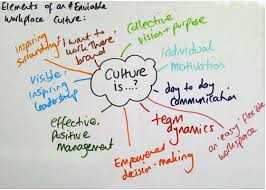A few weeks ago, I was at Bloomerang’s Bloomcon conference in Orlando, FL when an energetic fundraising coach/consultant walked up and introduced herself. Her name was Mazarine Treyz. Much was discussed and at the end of the day I walked away with two of her books.
As the weeks have passed, I’ve rapidly consumed Mazarine’s written thoughts on resource development and charting a career path in fundraising. To say that I’m impressed would be an understatement.
This week’s three blog posts will focus on Mazarine’s two books and an virtual online conference she is hosting.
 If you don’t own a copy of “Get The Job: Your Fundraising Career Empowerment Guide,” then I strongly suggest clicking over to Amazon and purchasing a copy of this book.
If you don’t own a copy of “Get The Job: Your Fundraising Career Empowerment Guide,” then I strongly suggest clicking over to Amazon and purchasing a copy of this book.
As I read this book, it dawned on me that everyone can benefit from Mazarine’s work:
- Individuals looking to break into the fundraising field
- Fundraising professionals looking to find work-life balance and fulfillment
- Employees looking to “manage up“
- Executive directors and board volunteers currently in a search process
To those who are interviewing
Mazarine breaks it down for you with practical and pointed advice on:
- Writing your cover letter and resume
- Interviewing
- Negotiating your salary and benefits
In these initial chapters, I really liked what she wrote about anticipating certain tricky interview questions and how to respond. One such question she tackles is, “Why do you want this job? How does this fit into your plans for life?” Sure this question seems simple, but as someone who has been tripped up by it, I really wish I would’ve read this book first.
What I liked even more than the chapter on interview questions was the section addressing what types of questions you should be asking of your interviewers at the end of the interview. Here are just a few gems:
- How much was raised last year, and how much would I be expected to raise in the first year?
- How many times has this position been filled in the last four years?
- What are some difficult decisions that need to be made? Staff cuts? Budgets? Funding cuts?
For the person currently looking for a position in fundraising, this book is pure GOLD!
To those searching for balance and success
Mazarine starts from Day One with a chapter on what your first 90-days should look like. She provides tips on how to be a better fundraising professional; how to manage your career path; and how to focus your efforts and balance competing demands on your time.
Perhaps, some of the best stuff in the book for individuals currently holding down a fundraising job are case studies (e.g. interviews with other successful non-profit professionals). There is more wisdom shared in that chapter than I can possibly describe.
Managing Up
Mazarine hits the nail on the head when she describes the day-and-the-life of a typical fundraising professional in a one-person development shop. In approximately 10-pages, she covers lots of ground including:
- Organizational culture
- Managing your boss (aka the executive director)
- Assessing what type of boss your work for
There are many things that go into making a top notch fundraising professional, but one thing I see in almost every single one is their ability to “manage up.” Lots has been written on this subject, but Mazarine digests it down very nicely.
Are you hiring?
If you are an executive director or board volunteer currently in the middle of a search process, Mazarine’s book can act like a mirror. It can help you better understand the candidates with whom you are meeting. It can help you craft better interview questions and anticipate what good candidates will say in response to those questions. It will help you know what questions those interviewees may ask of you.
It may even make you a better employer.
 Learn more about Mazarine Treyz
Learn more about Mazarine Treyz
If you can’t tell, I’ve quickly become a fan of Mazarine Treyz. She is one of the more genuine people who I’ve met in my travels, and I’ve quickly become a fan. Like me, Mazarine is a blogger and you can learn a lot about her by visiting her blog and sifting through her posts. You can find her at Wild Woman Fundraising. But if you do nothing else, you should go buy a copy of this book. I promise that you won’t regret it!

 A few years ago I noticed some of the letters being sent to me by non-profit organizations were getting less wordy. In fact, these next generation donor communications pieces were mostly featuring a big photograph of someone/something that was supposedly mission-focused.
A few years ago I noticed some of the letters being sent to me by non-profit organizations were getting less wordy. In fact, these next generation donor communications pieces were mostly featuring a big photograph of someone/something that was supposedly mission-focused.
 A few weeks ago I was reading my friend Jay Love’s Bloomerang blog post titled “
A few weeks ago I was reading my friend Jay Love’s Bloomerang blog post titled “ Just the other day, I found myself in a boardroom facilitating a training on how to make a textbook-perfect, face-to-face solicitation. Discussion topics focused on all the usual suspects including fears, begging, best practices for getting on someone’s calendar, the 12-step process for making the actual ask, etc etc etc. However, at the end of the training and facilitated discussion, one board volunteer asked the following question:
Just the other day, I found myself in a boardroom facilitating a training on how to make a textbook-perfect, face-to-face solicitation. Discussion topics focused on all the usual suspects including fears, begging, best practices for getting on someone’s calendar, the 12-step process for making the actual ask, etc etc etc. However, at the end of the training and facilitated discussion, one board volunteer asked the following question: Over the years, I’ve heard volunteers say all of the following things when trying to fundraise:
Over the years, I’ve heard volunteers say all of the following things when trying to fundraise: Let me start by being transparent. The idea for this post grew out of the fact that I haven’t posted a new blog for a few weeks.
Let me start by being transparent. The idea for this post grew out of the fact that I haven’t posted a new blog for a few weeks.
 Last week in a post titled “
Last week in a post titled “ There is an old expression that says, “You need to dance with the person who brought you to the prom.” It essentially means you need to work with the person who got you where you’re at today in spite of the circumstances. When I think of this in terms of volunteer management (e.g. your board members and fundraising volunteers), it means you need to get the job done with those who you recruited.
There is an old expression that says, “You need to dance with the person who brought you to the prom.” It essentially means you need to work with the person who got you where you’re at today in spite of the circumstances. When I think of this in terms of volunteer management (e.g. your board members and fundraising volunteers), it means you need to get the job done with those who you recruited.
 Let’s pick-up where we left off a few days ago from my post titled “
Let’s pick-up where we left off a few days ago from my post titled “ When I worked for the Boy Scouts of America (BSA) in the late-1990s, there was a focused effort to stave off the tyranny of the urgent through the following strategies:
When I worked for the Boy Scouts of America (BSA) in the late-1990s, there was a focused effort to stave off the tyranny of the urgent through the following strategies: Changing your organizational culture (or at the very least rooting out tyranny of the urgent) will also likely require some combination of the following:
Changing your organizational culture (or at the very least rooting out tyranny of the urgent) will also likely require some combination of the following: Simply, this idea is rooted in the idea that urgent tasks trump important things, which results in consequences for individuals and organizations.
Simply, this idea is rooted in the idea that urgent tasks trump important things, which results in consequences for individuals and organizations. I looked around for diagnostic and evaluation tools failed to find anything. Perhaps, I’m using the wrong internet search words or maybe I’m looking in the wrong places. If anyone has seen anything, please share using the comment box on this blog. I’m very interested.
I looked around for diagnostic and evaluation tools failed to find anything. Perhaps, I’m using the wrong internet search words or maybe I’m looking in the wrong places. If anyone has seen anything, please share using the comment box on this blog. I’m very interested. Again, I go back to what Hummel tells us in his writings. The consequence is simple … “We have done those things which we ought not to have done, and we have left undone those things which we ought to have done.”
Again, I go back to what Hummel tells us in his writings. The consequence is simple … “We have done those things which we ought not to have done, and we have left undone those things which we ought to have done.”